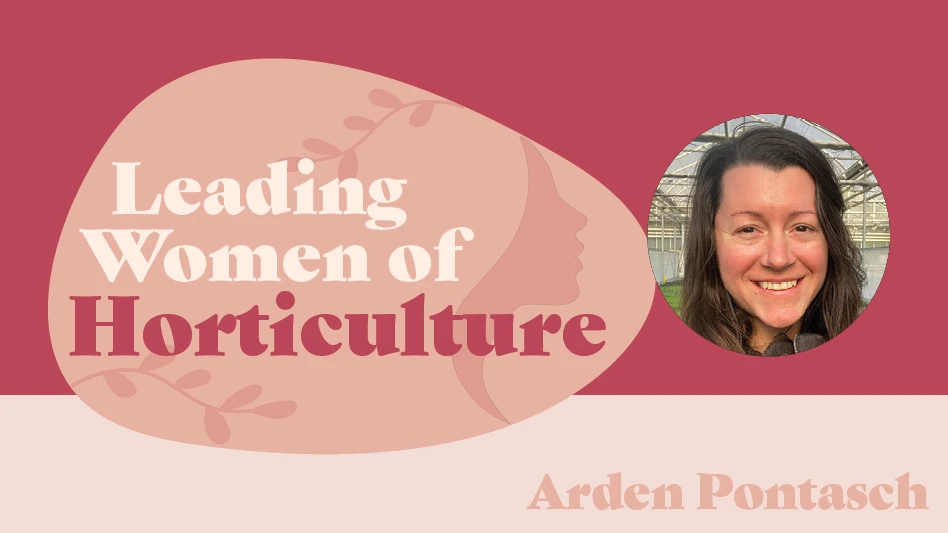 A block of quarantined plants in a retail nursery where P. ramorum was identified through state survey efforts. Photo by Kelly IvorsPhytophthora ramorum is a tragedy in the forest. In a nursery, it’s deadly. So when a group of ornamental growers, university researchers, extension professionals and others in the nursery industry met to talk about the most serious pests, P. ramorum was at the top of the list.
A block of quarantined plants in a retail nursery where P. ramorum was identified through state survey efforts. Photo by Kelly IvorsPhytophthora ramorum is a tragedy in the forest. In a nursery, it’s deadly. So when a group of ornamental growers, university researchers, extension professionals and others in the nursery industry met to talk about the most serious pests, P. ramorum was at the top of the list.
Growers listed P. ramorum as the worst disease. Although some growers chlorinate their irrigation water to prevent Phytophthora diseases, including P. ramorum, the treatment is expensive, and growers with smaller nurseries often can’t afford to treat their water. Growers asked researchers for more information on ways to sanitize water that control diseases caused by pathogens like P. ramorum.
The list of primary pests will be part of a new document called a “pest management strategic plan.” Pest management strategic plans are usually commodity-driven, listing primary insects, weeds and diseases, ways to control them, pest management challenges, and ways that researchers, educators and regulatory agencies can help the industry.
To facilitate dialog and create content for the plan, growers and others met during a pest management strategic planning workshop at the Mountain Horticultural Crops Research & Extension Center in Mills River, N.C., in the summer of 2009. Participants represented the woody plant ornamental industry from five southeastern states as well as the land grant university faculty charged with helping the nursery industry.
IPM needs
“We try not to spray any more than we have to,” said one grower. Others added they focus their pest management efforts only on the plants they are selling that year.
The worst offenders
Growers face yearly battles with insect pests. Of all of the insects that growers face, scale, borers and mites are the hardest to control. Many growers requested information on how they can implement IPM methods efficiently and profitably to control those pests.
The biggest weed problems in nurseries? That depends on the nursery. In field production it is nutsedge – a perennial weed that is not controlled well by most herbicides labeled for use in nurseries and is spread by cultivation. Container nurseries have very different weed populations, with spurge and bittercress being the dominant (and most costly) species. One central theme from growers was a desire to have more cost-effective weed management options – using knowledge and new technologies such as greater longevity of residual control, more postemergence options, and access to better tools and decision aids.
Amy Fulcher, extension associate from the University of Kentucky, said the strategic plan that will result from the discussions at the meeting will be a good resource for the nursery industry. The research and extension attendees recently formed a collaborative working group to design and implement strategies that control pests by using IPM.
“We now have a comprehensive needs assessment and a clearly defined set of priorities about how to advance pest management for Southeastern nursery growers,” Fulcher said.
Authors: Rosemary Hallberg, communication specialist, Southern Region IPM Center, rhallberg@sripmc.org; Amy Fulcher, extension associate for nursery crops, Department of Horticulture, University of Kentucky, afulcher@uky.edu; Joe Neal, professor, Department of Horticultural Science, North Carolina State University, joe_neal@ncsu.edu; Kelly Ivors, assistant professor, Department of Plant Pathology, North Carolina State University, kelly_ivors@ncsu.edu; Anthony LeBude, assistant professor, Department of Horticultural Science, North Carolina State University, anthony_lebude@ncsu.edu; Steven Frank, assistant professor, Department of Entomology, North Carolina State University, steven_frank@ncsu.edu.
Get curated news on YOUR industry.
Enter your email to receive our newsletters.
Explore the January 2010 Issue
Check out more from this issue and find your next story to read.
Latest from Nursery Management
- The Growth Industry Episode 3: Across the Pond with Neville Stein
- Trends: Proven Winners 2025 perennial survey shows strong demand
- Online registration opens for the 2025 Farwest Show
- Sustainabloom launches Wholesale Nickel Program to support floriculture sustainability
- Plant breeding as an art
- Society of American Florists accepting entries for 2025 Marketer of the Year Contest
- American Horticultural Society welcomes five new board members
- Get to know Christopher Brown Jr. of Lancaster Farms







